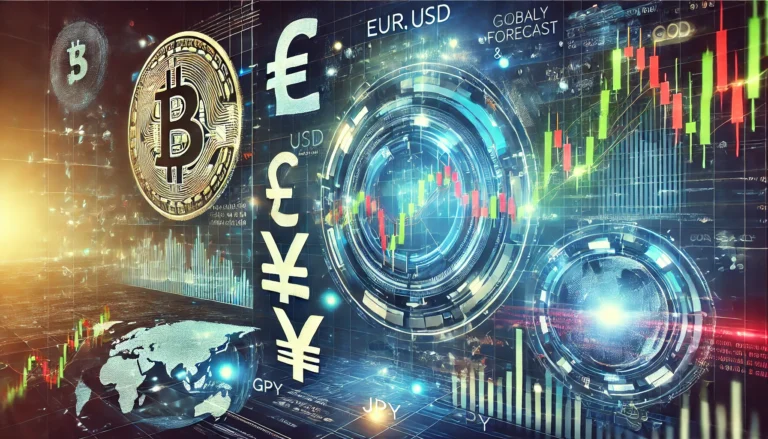
The short term moving average is a powerful tool that can help traders spot trends and make informed decisions in Forex trading.
In the world of Forex trading, understanding the short term moving average is crucial. It’s like having a guiding light in the vast ocean of currency fluctuations. This tool helps traders make sense of price movements, offering a clearer picture of market trends over shorter periods. When you see how the moving average works, it can feel like magic, smoothing out the chaos of price charts.
However, both beginners and experienced traders often struggle with it. They might find it challenging to determine the best periods to use or how to interpret the signals. Without proper understanding, the short term moving average can lead to confusion and potentially costly mistakes. That’s why grasping its fundamentals and applications is vital. It can transform your trading journey, helping you make informed decisions.
This article will explore the ins and outs of the short term moving average, its history, advantages, disadvantages, and practical strategies for implementation.
If you’re curious about forex trading near me, it can provide valuable insights into local trading opportunities and communities.
What is a short term moving average?
A short term moving average is a tool that shows the average price of a currency pair over a specific short period. It helps traders identify trends quickly. Imagine you are looking at a weekly chart of a currency pair. A short term moving average might show the average price over the last 5 or 10 days. This makes it easier to see if the price is going up or down.
Types of short term moving average
There are several types of short term moving averages, including:
- Simple Moving Average (SMA): This is the most common type. It calculates the average price over a specific number of periods.
- Exponential Moving Average (EMA): This type gives more weight to recent prices, making it more responsive to new information.
- Weighted Moving Average (WMA): Similar to EMA, but it assigns different weights to prices based on their age.
How short term moving average smooths out price action
One of the main benefits of using a short term moving average is that it smooths out price fluctuations. When prices jump up and down rapidly, looking at the moving average can help you see the overall trend more clearly. It’s like looking through a pair of glasses that filter out the noise, allowing you to focus on the bigger picture.
Common periods used and why
Traders often use short term moving averages for periods like 5, 10, or 20 days. These shorter periods can react quickly to price changes. For instance, a 5-day moving average will change more rapidly than a 20-day moving average. This allows traders to spot trends and reversals faster, making it easier to make timely decisions.
The History of short term moving average: How It Became Popular
Origin of short term moving average
The concept of moving averages dates back to the early 1900s. It was created by traders looking for a way to analyze stock price movements. The goal was to find a method to smooth out the fluctuations and identify trends more easily.
When did traders start using it widely?
As technology advanced, more traders began using short term moving averages during the 1970s and 1980s. The rise of computers made it easier to calculate and analyze these averages in real-time. This led to a significant increase in their popularity among traders.
Real-life stories
Many professional traders have made fortunes using short term moving averages. For example, a trader might notice a strong upward trend when the price crosses above the moving average. They could then enter a position and ride the trend, leading to substantial profits. These success stories inspire many aspiring traders to learn more about this powerful tool.
Advantages and Disadvantages of short term moving average
Advantages:
- Helps identify trends easily: Short term moving averages make it simple to spot upward or downward trends.
- Useful for dynamic support and resistance: They can act as support or resistance levels, helping traders make informed decisions.
- Works well for crossover strategies: Traders can use multiple moving averages to spot potential buy and sell signals.
Disadvantages:
- lags behind price movements: Since moving averages are based on past prices, they can lag and miss quick price changes.
- Can give false signals in sideways markets: In a ranging market, moving averages can lead to misleading signals, causing losses.
How to Apply short term moving average on MT4 & MT5
Step-by-step guide to adding short term moving average on charts
To add a short term moving average on MetaTrader 4 (MT4) or MetaTrader 5 (MT5), follow these steps:
- Open your trading platform and select the chart for the currency pair.
- Click on the “Insert” menu, then navigate to “Indicators” and select “Trend.”
- Choose “Moving Average” and a window will pop up.
- Set the desired period (e.g., 5 or 10) and choose the type (SMA, EMA, WMA).
- Click “OK,” and the moving average will appear on your chart.
Customizing short term moving average settings
You can customize the settings of your short term moving average to fit your trading style. Change the color, thickness, or type of moving average to make it stand out on your chart. This personalization helps you quickly identify signals while trading.
Saving templates for easy application
If you find a specific moving average setup that works for you, save it as a template. This way, you can easily apply it to other charts without having to redo all the settings each time. It saves time and keeps your trading organized.
5 to 7 Trading Strategies Using Only short term moving average
All Time Frame Strategy (M5 to D1)
This strategy involves using short term moving averages across multiple time frames. For example, if you see a crossover of a 5-day moving average over a 10-day moving average in the M5 chart, it’s a signal to buy. In a D1 chart, the same crossover might indicate a long-term trend.
Trending Strategies
In trending markets, you can use the short term moving average to identify the direction of the trend. For instance, if the price is above the moving average, you can look for buy signals. Conversely, if it’s below, you should consider selling. This allows you to trade along with the market.
Counter Trade Strategies
Counter trading involves going against the trend. If the price is above the moving average, but you see a significant reversal signal, it may be an opportunity to sell. Be cautious, as this strategy requires careful analysis and risk management.
Swing Trade Strategies
For swing trading, you can look for setups where the price approaches the short term moving average and shows signs of bouncing back. This could indicate a potential buy signal. For example, if the price retraces to the 10-day moving average and then rises, it may be a good time to enter a trade.
5 to 7 Trading Strategies Combining short term moving average with Other Indicators
All Time Frame Strategy (M5 to D1)
Combining short term moving averages with other indicators, such as the RSI (Relative Strength Index), can provide additional confirmation. For example, if the moving average indicates a buy signal, but the RSI is also showing oversold conditions, it strengthens your case for entering a trade.
Trending Strategies
Using moving averages along with trend lines can enhance your trading strategy. If the price is above the moving average and also breaks a trend line, it could signal a strong upward movement. This combination gives you a better chance of success in trending markets.
Counter Trade Strategies
For counter-trend strategies, pairing short term moving averages with Bollinger Bands can be effective. If the price hits the upper band and the moving average is flat or declining, it may indicate a potential reversal point for selling.
Swing Trade Strategies
Adding MACD (Moving Average Convergence Divergence) to your short term moving average strategy can help in swing trading. If the price approaches the moving average and the MACD shows bullish divergence, it could be a signal to buy.
If you’re interested in tools like the gator oscillator, it can further enhance your trading analysis.
Top 10 FAQs About short term moving average
1. What is a short term moving average?
A short term moving average calculates the average price of a currency pair over a short period, helping traders identify trends.
2. How do I choose the right period for my moving average?
Common periods for short term moving averages are 5, 10, or 20 days. Choose based on your trading style and how quickly you want to react to price changes.
3. What are the different types of moving averages?
There are simple, exponential, and weighted moving averages, each with its unique calculation method and responsiveness to price changes.
4. How does a moving average help in trading?
A moving average smooths out price fluctuations, making it easier to identify trends and potential entry or exit points.
5. Can moving averages give false signals?
Yes, moving averages can lag behind price movements and may provide false signals in sideways markets, so it’s essential to use them in conjunction with other indicators.
6. How can I apply moving averages in my trading platform?
You can add moving averages to your charts in platforms like MT4 and MT5 by following simple steps in the indicators menu.
7. What is the difference between SMA and EMA?
The Simple Moving Average (SMA) gives equal weight to all prices, while the Exponential Moving Average (EMA) gives more weight to recent prices, making it more responsive.
8. How do I use moving averages for support and resistance?
Moving averages can act as dynamic support or resistance levels. Traders often look for price reactions around these levels to make trading decisions.
9. What is the best time frame for using short term moving averages?
It depends on your trading style. Shorter time frames are better for day trading, while longer time frames can be used for swing trading.
10. Should I rely solely on moving averages for trading?
No, while moving averages are helpful, they should be used alongside other indicators and analysis methods for better decision-making.
Conclusion
In summary, the short term moving average is an invaluable tool for Forex traders. It helps identify trends, provides support and resistance levels, and can be used in various trading strategies. Understanding how to apply it effectively can make a significant difference in your trading success.
As you explore using short term moving averages, remember to test different strategies and find what works best for you. Practice makes perfect, and it’s always wise to start with a demo account before committing real money. Happy trading!
Want to level up your trading skills? Check out trusted insights from MacroTrends, Statista
Expand Your Knowledge
- 📌 Forex Trading Learning Road Map
- 📌 Forex Trading Course with no Fees
- 📌 Forex Trading Issues, Problems, and Solutions
- 📌 Forex Daily Forecast & Live Updates
- 📌 Forex Fundamental & News Analysis: Tomorrow’s Market Movers & Trade Opportunities
- 📌 Forex Education Hub: Learn & Profit
- 📌 Forex Technical Analysis, Indicators & EA’s
Start Trading Today
Ready to take your forex trading to the next level? Open an account with Exness, one of the most trusted platforms in the industry. 👉 Sign Up Now and trade with confidence!
My recommended broker stands out with ultra-low spreads for beginners, instant withdrawals, and zero spread accounts for pro traders.
Trusted since 2008, lightning-fast execution, no hidden fees, and a secure, transparent trading environment—giving you the edge you need to succeed. 🚀
Watch this helpful video to better understand short term moving average:
Note: The video above is embedded from YouTube and is the property of its original creator. We do not own or take responsibility for the content or opinions expressed in the video.
In the world of trading, understanding market trends is crucial for making informed decisions. Technical analysts emphasize the importance of trend analysis, as they believe that a security’s price movement often continues in the same direction. To aid in this process, investors can utilize tools like the simple moving average (SMA). This indicator allows traders to visualize a security’s price over a specific time frame, smoothing out daily fluctuations to reveal the underlying trend. By calculating the average price over a set period, such as 20 days, traders can identify whether the market is currently in an uptrend, downtrend, or moving sideways. This information is vital for determining when to buy, sell, or hold a position effectively.
Using the simple moving average can provide significant buy and sell signals. For instance, when a security’s price moves above an upward-sloping SMA, it may indicate a good buying opportunity. Similarly, if the price approaches the SMA and then rebounds, it may serve as a “support bounce” buy signal. On the contrary, if the price reaches the moving average and then declines, this could signal a selling opportunity. Nonetheless, traders should be mindful of potential pitfalls, such as whipsaws, where the price crosses the moving average and quickly reverses direction. To mitigate these issues, some traders opt for longer-term moving averages, like the 50-day or 200-day SMAs, which tend to provide smoother trends with fewer signals. However, it’s essential to recognize that all moving averages are lagging indicators; they react to past price movements, which means they may not accurately reflect sudden market changes. For those looking to minimize lag, alternatives like weighted moving averages or exponential moving averages can be more effective, as they prioritize recent price data.
In addition to technical analysis, traders should also consider fundamental analysis in the forex market. This approach focuses on evaluating economic indicators, interest rates, and geopolitical factors that can impact currency values. By understanding both the technical and fundamental aspects of forex trading, investors can create a well-rounded strategy for navigating the complexities of the market. For those interested in exploring this topic further, you can learn more about forex fundamental analysis to enhance your trading knowledge.




